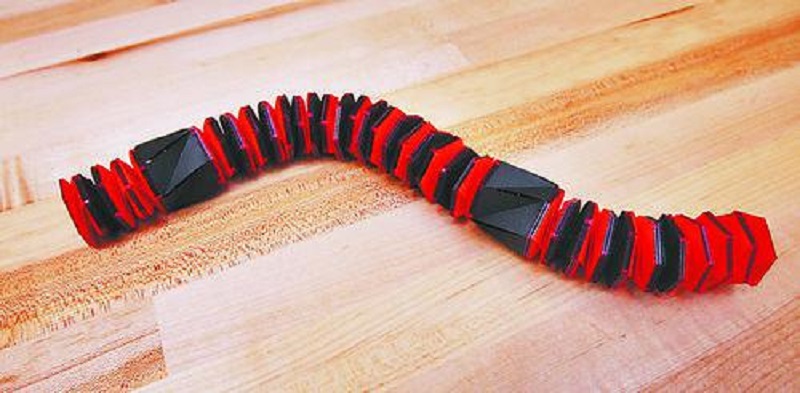Engineers at Princeton University and North Carolina State University, USA, have combined ancient origami techniques with modern materials science to create a soft robot that can easily navigate through mazes. Published in the latest issue of the journal Proceedings of the National Academy of Sciences, the researchers describe their process of creating the robot out of modular, cylindrical parts.
Steering soft-bodied robots has always been challenging because traditional steering equipment increases the rigidity of the robot and reduces its agility. This new design overcomes these problems by building the steering system directly into the robot. Modular soft-bodied robots provide further insight into the future of robots that can be grown, repaired, and developed with new functionality.
The newly created robot can be assembled and disassembled while on the move, allowing it to work as a single robot and as a group. Each of its parts is an individual unit that can communicate with each other and be assembled on command, or it can be easily separated and then joined together using magnets.
The researchers built the robot using cylindrical sections in the form of origami known as the Kreslin pattern. The pattern allows each segment to twist into a flattened disc and expand back into a cylinder. This twisting, stretching motion is the basis for the robot’s ability to crawl and change direction. By folding parts of the cylinder, the robot is also able to change direction as it moves forward.
The most challenging aspect of this work was to develop a mechanism to drive and manipulate the robot’s bending and folding motions. The researchers used two materials that react differently when heated: liquid crystal elastomers (which shrink when heated) and polyimide (which expands when heated), and combined them into thin strips along the creases of the Kreslin pattern. A stretchable heater made of silver nanowires was installed at each fold. An electric current on the nanowire heater heated a control strip, causing the two materials to deform due to their different coefficients of thermal expansion, which in turn triggered the folds. By adjusting the current and the control strip, the researchers can precisely control the folding and bending, driving the robot to move and steer with precision.












